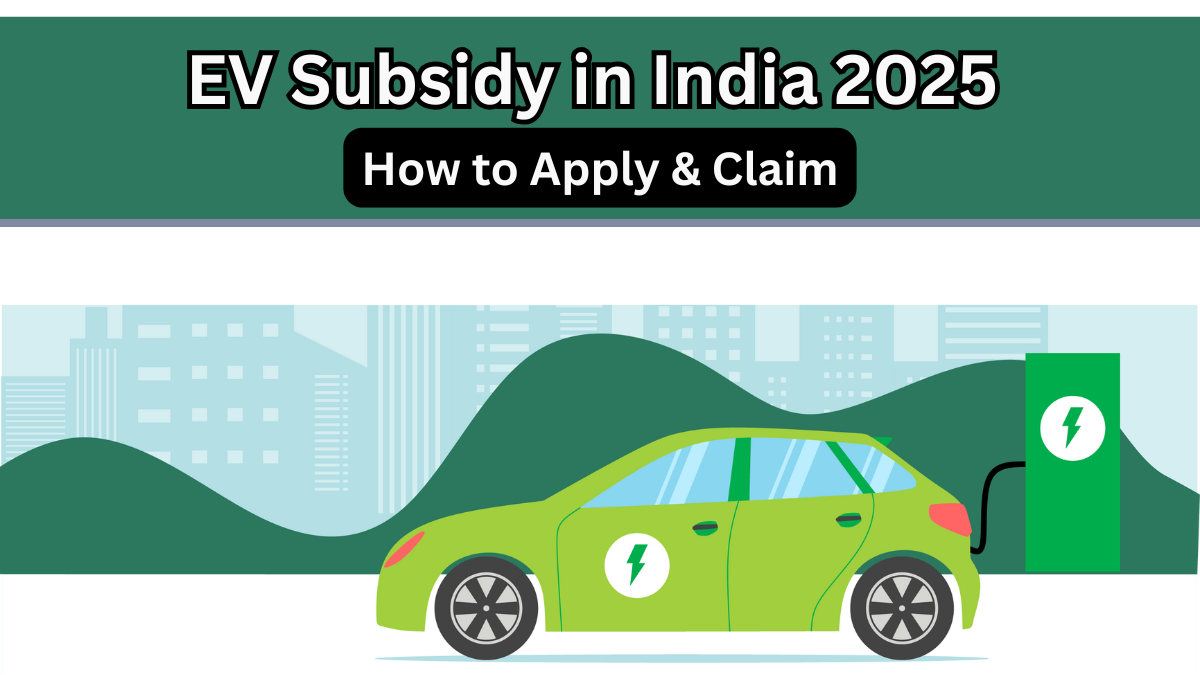As India accelerates its transition to clean mobility, the government continues to incentivize electric vehicle adoption through financial support. The EV subsidy India September 2025 scheme provides attractive rebates to individuals and businesses purchasing electric vehicles (EVs). Here’s a complete guide on how to apply, claim, and maximize your benefits.

What is the EV Subsidy Scheme?
The government of India has implemented subsidies under the Faster Adoption and Manufacturing of Hybrid and Electric Vehicles (FAME) India Scheme Phase II. This initiative encourages the adoption of electric mobility and reduces the carbon footprint by making EVs more affordable.
Key Highlights:
-
Financial incentives for electric two-wheelers, three-wheelers, and four-wheelers.
-
Reduces the upfront cost of EVs, making them competitive with petrol and diesel vehicles.
-
Available for both personal buyers and commercial fleet operators.
Who is Eligible for EV Subsidy?
Eligibility for the electric vehicle rebate India depends on the type of EV, the vehicle’s battery capacity, and the buyer category.
Eligibility Overview:
| Vehicle Type | Eligible Buyers | Maximum Subsidy (INR) |
|---|---|---|
| Electric Two-Wheeler | Individual buyers | ₹15,000 – ₹30,000 |
| Electric Three-Wheeler | Fleet operators & entrepreneurs | ₹1,50,000 – ₹2,50,000 |
| Electric Four-Wheeler | Personal & commercial | ₹1,00,000 – ₹2,50,000 |
| Electric Buses | Public transport operators | ₹10 lakh – ₹20 lakh per bus |
Note: The subsidy varies depending on battery capacity and vehicle type.
How to Apply for EV Subsidy India September 2025
Applying for the EV subsidy India September 2025 is straightforward if you follow the correct procedure:
-
Select a Vehicle: Choose an electric vehicle listed under the FAME India Phase II approved models.
-
Dealer Verification: Ensure your EV dealer is registered with the Department of Heavy Industry (DHI) for subsidy claims.
-
Document Submission: Provide documents including proof of identity, address, and vehicle purchase invoice.
-
Claim Processing: The dealer submits the subsidy claim to the government on your behalf.
-
Subsidy Disbursement: The rebate is directly transferred to the dealer, reducing the cost of your EV.
Benefits of the EV Subsidy and Electric Vehicle Rebates
The government’s incentive program offers multiple advantages for buyers:
-
Reduced Cost: The upfront price of EVs becomes more affordable.
-
Eco-Friendly: Promotes zero-emission transportation.
-
Higher Resale Value: Electric vehicles are increasingly in demand.
-
Future Incentives: Some states offer additional rebates and tax benefits on top of the central subsidy.
State-Wise Subsidy Snapshot
Some states also provide top-up incentives to further reduce EV costs.
| State | Additional Incentive | Eligibility |
|---|---|---|
| Maharashtra | ₹20,000 for two-wheelers | Personal buyers |
| Delhi | ₹30,000 for two-wheelers | Personal buyers |
| Karnataka | 10% of vehicle cost (up to ₹50,000) | Two- & three-wheelers |
| Tamil Nadu | ₹25,000 – ₹50,000 | EV buyers of all categories |
FAQs About EV Subsidy India 2025
Q1: Can I claim subsidy for a used electric vehicle?
A1: No. The subsidy is applicable only for new electric vehicles purchased from registered dealers.
Q2: How long does it take for the subsidy to be processed?
A2: The subsidy is usually processed within 30–45 days after submission by the dealer.
Q3: Are electric bikes included in the rebate scheme?
A3: Yes. Electric two-wheelers are eligible, with subsidies ranging from ₹15,000 to ₹30,000 depending on battery capacity.
Q4: Can businesses claim EV subsidy for fleet vehicles?
A4: Absolutely. Commercial fleet operators are eligible for higher subsidies on three-wheelers, four-wheelers, and buses.
Click here to learn more